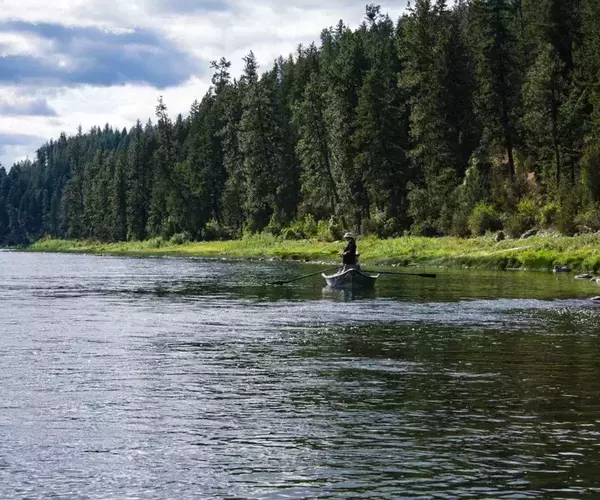
Clark Fork River
The Clark Fork River - located on the west side of the Continental Divide – begins its 3oo+ mile journey from its headwaters near Deer Lodge to its terminus at Lake Pend Oreille in Idaho. This diverse waterway supports a wide range of Montana fishing and recreational opportunities.
Trout numbers and populations are generally a focal point between the headwaters and the river's confluence with the Flathead River near Plains, Montana. The river transforms from a tiny headwater stream to an epic, western freestone over 175 miles.
The river has been at the forefront of many environmental battles over the years. Toxic waste from upstream mining devastated the upper river ecosystem, and industrial pollution from now defunct paper mills continues to be a threat. Organized efforts by myriad environmental groups, like the Clark Fork Coalition, have made significant strides in restoration efforts that have greatly improved this once seemingly doomed ecosystem.
The Clark Fork runs through downtown Missoula as a celebrated local resource for anglers fishing in Montana and recreational users.
Highly Recommended
"From start to finish, these guys were top notch!! Toby’s communication with the reservations and float information was outstanding."
ClarkFork River Sections
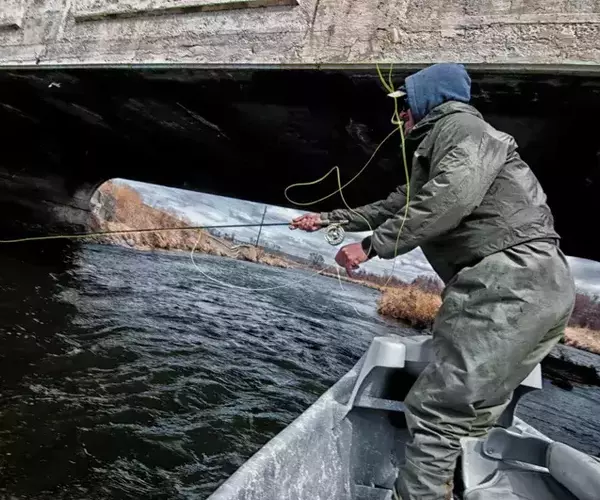
Warm Springs to Blackfoot River
The Clark Fork River forms at the confluence of Warm Springs and Silver Bow creeks near Deer Lodge, Montana. The headwater sections of the river were severely degraded by toxic waste and industrial pollution throughout the early 1900’s.
Once a designated Superfund site, significant remediation efforts have taken place throughout the upper river drainage.
Brown trout are most common throughout the upper river but fish numbers are low. Some large brown trout are found in the sections close to Deer Lodge, but the river narrows and lacks good holding water downstream of Drummond, MT.
The best places to fly fish the upper Clark Fork River are downstream from the mouth of Rock Creek and upstream of Deer Lodge.
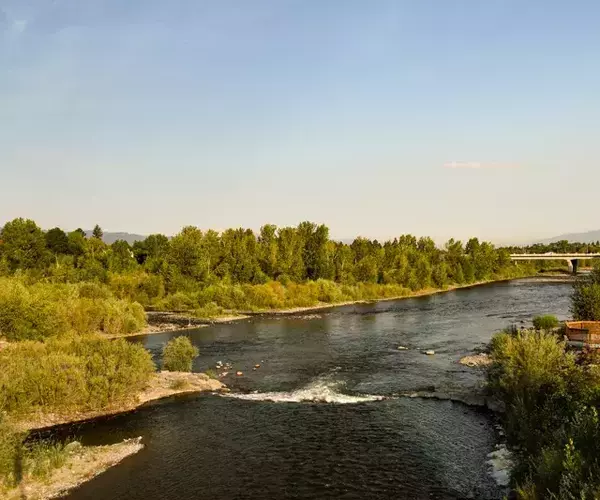
Missoula through Alberton Gorge
Missoula is a vibrant university city in western Montana with convenient access to the great outdoors in every direction. The Clark Fork cuts through the heart of the vibrant downtown district, where it receives heavy use by both anglers and recreational users.
During the wintertime, it’s not uncommon to see a kayaker in a dry suit surfing a winter wave while an angler fishes to rising trout just a few yards downstream. Summertime activity on this section of the river is as “busy as it gets.”
Early and late-season fly fishing near Missoula on the Clark Fork is a blend of dry and streamer fly fishing, well-suited for anglers of all skill levels.
Recreational use of the river by tubers, rafters, and kayakers is very heavy during July, August, and September.
The Alberton Gorge section, well downstream of Missoula, takes floaters through spectacular canyon scenery with some substantial whitewater sections best left to the experienced oarsmen.
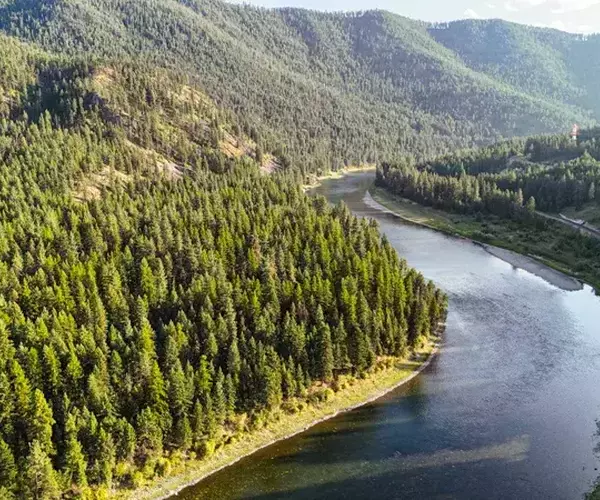
Alberton Gorge to Flathead River
The lower Clark Fork River is a Montana fly fishing jewel, immersing anglers in pristine sections of big water. Westslope cutthroat and rainbow trout are home to these water in good numbers.
Floating the lower Clark Fork is a classic Montana fly fishing experience for novice and experienced anglers alike. The lower river usually fishes well in late summer, when the other rivers near Missoula turn off with the hot weather.
Terrestrial and nocturnal stones get those big cutbows on the lookout early in the mornings and trico hatches closely follow.
The river has a varied character throughout this section, with long, flatwater sections between the productive riffle and pocket water stretches. Skilled anglers are quick to recognize that their efforts are best spent on fishing structure, current seams, and back-eddies.
Fishing Conditions Through the Seasons
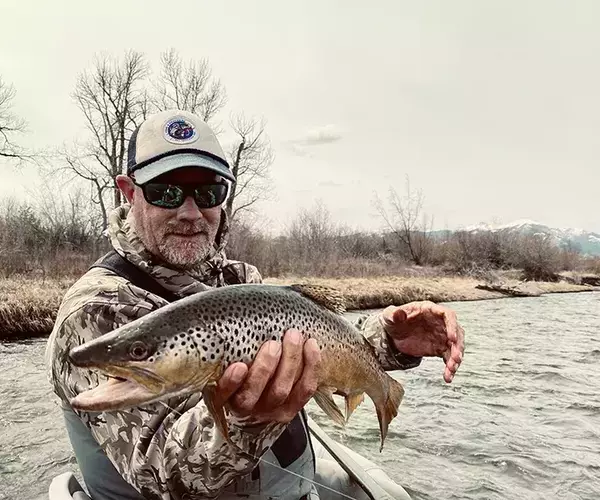
Spring
The lower river rises quickly with early season runoff from upstream tributaries and rivers. Mayfly and caddis hatches near Missoula provide some excellent dry fly fishing, along with some skwala too.
The upper river sections near Deer Lodge and around the mouth of Rock Creek fish well in the springtime before runoff and the summer heat. Streamer and dry/dropper setups work well along the productive river sections with good holding water and structure.
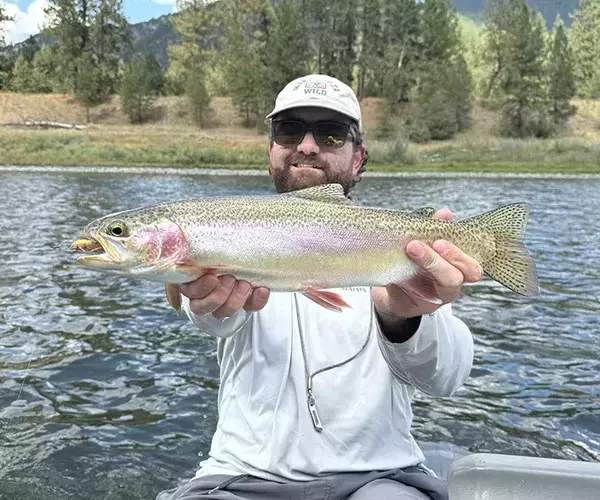
Summer
The upper river loses water volume quickly and starts to become full of blooming algae by early June, while the lower river surges with runoff conditions. Most anglers focus their fly fishing efforts closer to Missoula through the early summer.
The lower Clark Fork remains a solid option for anglers when other rivers start to warm. The volume of the river, downstream of its confluence with the Bitterroot, is big and warms and cools at a slower pace than the small to mid-sized Montana rivers.

Fall
Fly fishing the lower Clark Fork is best in September and October, highlighted by mayfly hatches and dry fly sipping trout. Trico hatches and spinner falls begin in August and carry on until the nights get cold sometime in September. Hecuba, mahogany, and blue-winged olive mayfly hatches pick up soon after the trico spinner fall, resulting in several hours of surface feeding by resident trout.
Single dries and dry/dropper setups are standard methods for anglers fishing here in the fall.
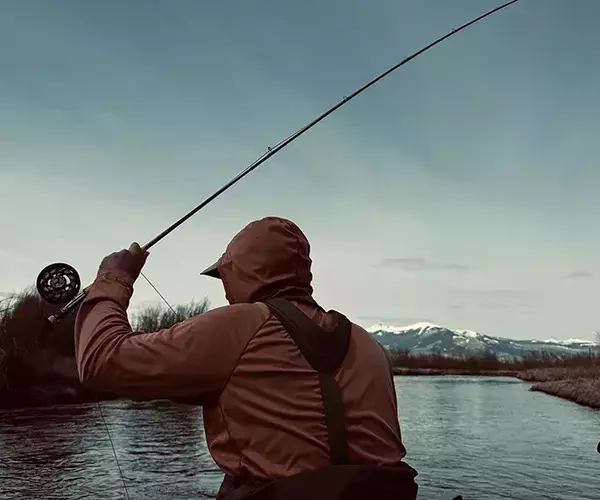
Winter
The upper river, near Warm Springs, Montana, is an excellent winter fishery during mild January and February days. This “quasi-tailwater” fishery stays ice-free near its headwaters and offers reliable nymph fishing with scuds, sowbugs, and midge patterns.
Missoula anglers frequent the river stretches close to town on warm winter days for a few hours of wade fishing. Expect dry fly opportunities on overcast days during sporadic midge hatches. Nymph fishing through the deep holes below riffles is a great cure for cabin fever during the long winter days of January and February.
Clark Fork River Fly Box Essentials
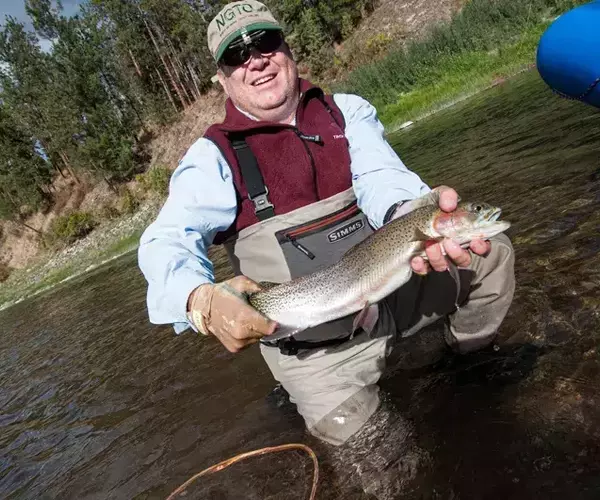
Clark Fork River Fishing Trips
Located near Missoula, the Clark Fork River is one of those Montana fly fishing destinations that are part of our custom fly fishing itinerary packages. With over 20 years of experience as a fly fishing outfitter in Montana, there aren’t too many trout fisheries that we don’t’ have experience on.
Day trips to the upper Clark Fork River, near Deer Lodge, are available during April and early May to our guests who are fishing with us on multi-day reservations. The small river holds enough water to float using rafts and drift boats after the low-elevation snowmelt.
A few of our Montana fishing guides turn their attention to the blue-ribbon trout water near Missoula as fall approaches in September. Our home waters near Bozeman fish well this time of year, but most of it is subsurface using nymphs or streamers, whereas these rivers tend to have more dry fly fishing opportunities. The lower Clark Fork is a Montana favorite of ours when conditions are right.
Building customized Montana fly fishing vacation itineraries for experienced anglers is one of the unique benefits available to our clients. Contact us for suggestions regarding a Missoula fly fishing trip with one of the Fins and Feathers team members.
Related Articles From The Montana Fly Fishing Blog

Category: Bozeman Fly Fishing Trip Planning, News & Updates
When is the Best Time to Fly Fish in Montana?
Post Date: 03/06/2024
Montana fly fishing is among the best wild trout fly fishing destinations in the world. Timing your fly fishing vacation around the best times of the year is critical to...
Read Article
Category: Bozeman Fly Fishing Trip Planning, Tips on Flyfishing Montana Rivers
Where is the Best Fly Fishing in Montana
Post Date: 03/16/2024
Trout anglers have no shortage of great places to fish. The state of Montana alone boasts enough trout water to keep you busy for several lifetimes. What’s the best trout...
Read Article







































